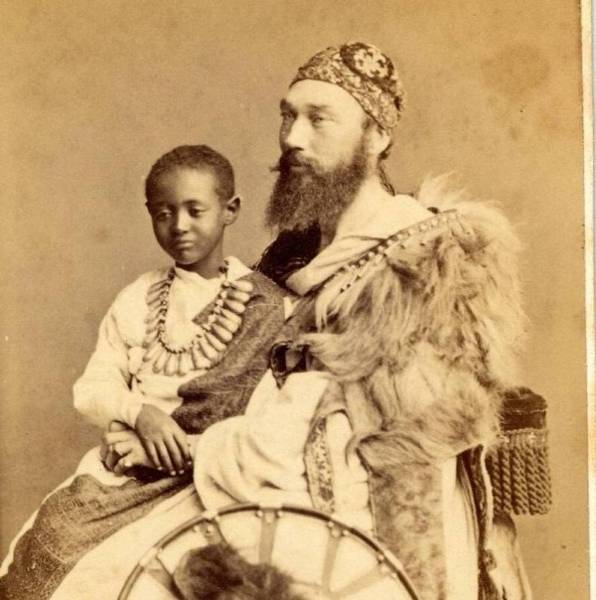I know this isn't all about me, but the row about those Danish cartoons of the Prophet Mohammed has made my life a misery. At the end of the week when the storm broke, I pitched an idea to the deputy editor of the Scotsman, for whom I draw the Saturday op-ed cartoon. I was going to show someone (unseen) reading a copy of France Soir, the French paper which first republished the offending cartoons, with a 'thinks' bubble coming from behind the paper with the words "But these don't even look like me!" inside it. But the editor chickened out.
Two days later I had to tackle Tony Parsons's Daily Mirror column which was, inevitably, about reactions to the cartoons. First I had a young, wild-eyed Muslim saying how offensive the cartoons were to an older one who was saying we needed a serious debate about the issues raised. The young man replied: "What! You mean we can't bomb them?" That bit the dust almost immediately, so next I had the toddler in the push chair on the protest march, looking up at his hat with the 'I love al-Qaeda' sticker on it and thinking "Hmmm... that's a bit childish...". The Mirror features desk didn't like that one either, and suggested I illustrate Parsons's second story, about the Celebrity Big Brother contestant and cosmetic surgery victim Pete Burns. So I had Pete pouting grotesquely in his monkey coat saying "Why can't they have a ****in' prohibition on depicting MY image?" They took that one – but, needless to say, the caption was changed. I can understand editorial timidity... almost. The Mirror explained that they didn't want to alienate their 80,000 Muslim readers by suggesting even the most tenuous connection between their prophet and the hapless celebrity. I did point out that people would have to buy the Mirror before burning it, but that didn't get me very far.
You're probably as bored as I am with the whole thing by now. But here, for what it's worth, is my line.
Satire – particularly visual satire – is a finely tuned medium, and a useful ground rule is that you only satirise people more powerful than you are. In the felicitous phrase which should be the definition of all journalism, your job is to comfort the afflicted and afflict the comfortable. Viewed within the context of Danish domestic politics, the cartoons can only be seen as an attack on a small, isolated, frightened and, crucially, poor and generally powerless group of people, some of whose members probably empty the bins outside the offices of Jyllands Posten. In which case the decision to publish the cartoons (if not the cartoons themselves) was wrong, because it was really little more than bullying.
However, the subsequent reaction, fomented by reactionary Danish imams and sponsored by the governments of Saudi Arabia, Syria, Lybia, Iran, Indonesia and many other countries in a region of the world not noted for its reverence for free-speech, was motivated entirely by a desire to entrench and extend the power of a disparate alliance of Ba'athists, mullahs, jihadis and despots who, ironically, were aping the standard response of Zionists to any criticism of Israel as being intrinsically anti-Semitic and therefore so offensive it should never have been expressed in the first place. Taking offence, in other words, is the best form of attack. All of this is crying out to be satirised, and retrospectively almost justifies the publication of the cartoons in the first place. But only almost.
Meanwhile, having been paid 73 quid a cartoon, 12 cartoonists are in hiding in fear of their lives, a babel of weasel words about free speech hangs like smog over vast swathes of Europe, carefully orchestrated spontaneous demonstrations continue to torch embassies and consulates and, so far, around 30 people have died, all of whom have been shot by the police of their own, Islamic countries.
This stopped being about the courtesy you should afford other people's beliefs almost as soon as it happened, just like religion stops being about God as soon as one, usually self-appointed proselytiser has enough followers to boss about. And it stopped being specifically about cartoons before the ink was dry.
I could write thousands of words about the complex interplay of humour, satire, bad taste, offence, attack, control and power that cartoons as a medium exemplify, but in the meantime I'll have to limit myself to telling you about the only actually funny cartoon (and that includes the original cartoons themselves) I've seen since this whole nonsense erupted.
It was by Bill Leak in the Australian and shows four armed and hooded jihadis weeping with laughter and standing over the body of a beheaded cartoonist. One of them is saying "Call yourself a cartoonist? You can't even draw breath!" The caption at the bottom reads: "Now THAT's funny!"

